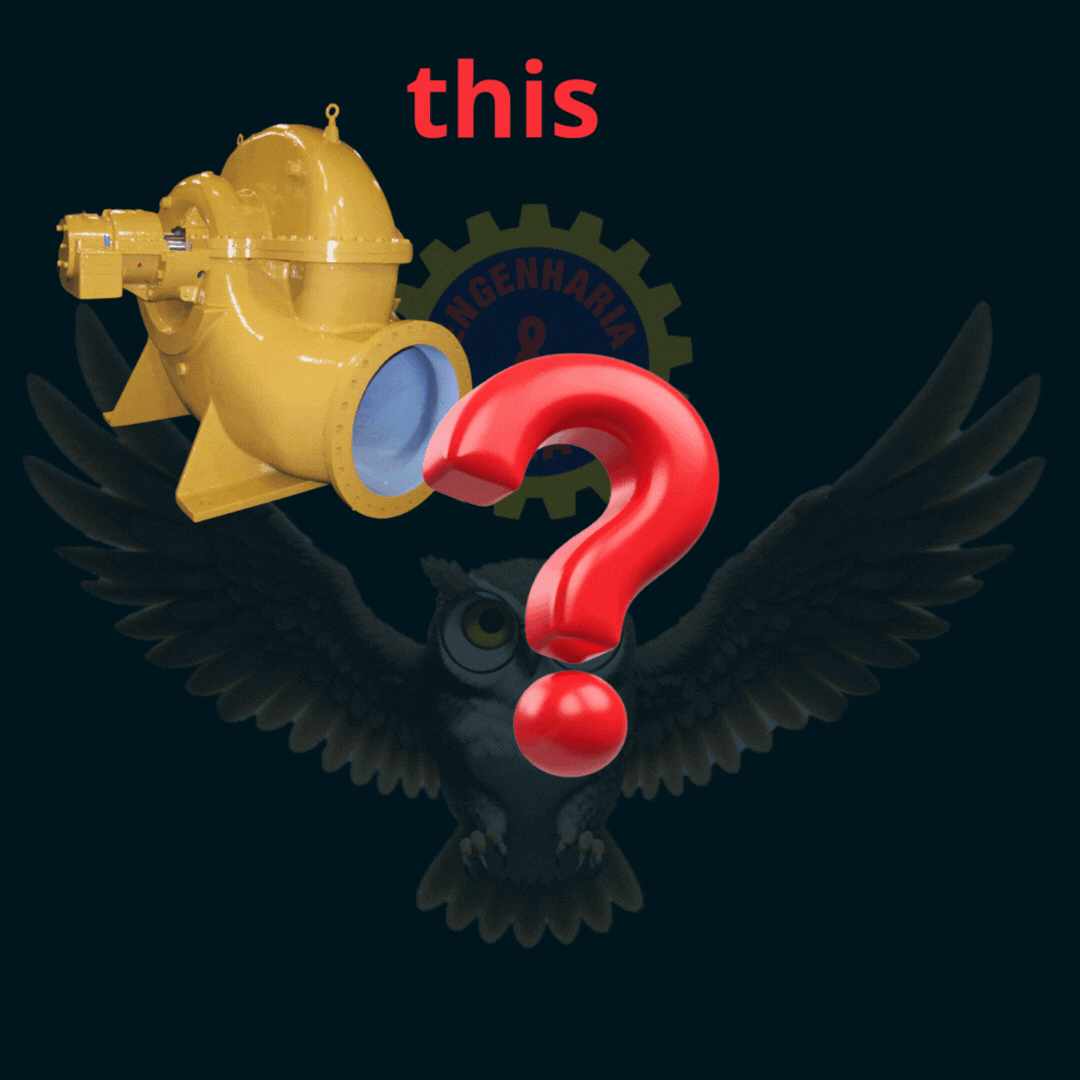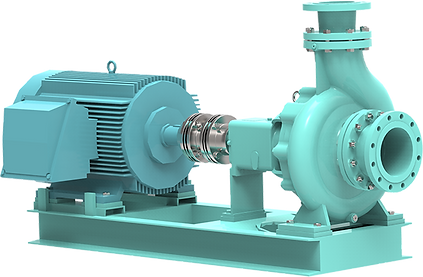
Engineering That Connects Theory To Industrial Practice
Do you need to size a centrifugal pump for your pumping installation but don’t know how?
This is the most common question among engineers and technicians — and it was ours too.
In university, the topic of Centrifugal Pump Specification is rarely presented in a practical and comprehensive way, leaving important gaps in the process.
To fix that, we developed a step-by-step method together with an exclusive sizing software that automates calculations, generates curves and technical reports, and eliminates the uncertainty in selecting the right pump.
Whether water, oil, or any other fluid, you’ll have a solution that combines applied knowledge + practical tools, making sizing faster, safer, and more professional.

What You Need to Know to Size a Pump

-
Fluid properties (density, specific weight, viscosity).
-
Flow concepts (pressure, flow rate, average velocity, Reynolds number).
-
Components of a pumping system (pipes, valves, suction and discharge).
-
And finally, the most confusing calculations: head losses, energy equations, and NPSH.
In the course, you’ll learn all these concepts step by step, and you’ll also use exclusive software that performs calculations, generates curves, and produces reports automatically.
Exclusive Software for our Course Students
In addition to the step-by-step content, you’ll get access to our exclusive pump sizing software, developed specifically for Engenharia & Cia students.
With it, you can immediately apply the concepts you've learned and gain speed and confidence in your calculations.
The Software Does for You:
✔️ Simplified data entry: input manually or import directly from Excel spreadsheets.
✔️ Detailed calculations such as:
- Average velocities
- Reynolds number
- Friction factor
- Major losses and Minor losses
- Pump head
- Hydraulic power
- Available NPSH.
✔️ Curve generation: Hₜ × Q, Pₕ × Q, NPSHa × Q.
✔️ Practical export: save results in Excel. Generate automatic Word reports.
✔️ Intuitive interface: easy to use, even for those without experience in technical software.
👉 CLICK HERE to see all the software features.



Meet the Instructor
Micelli Camargo:
🎓 Academic Backgroung
- Mechanical Engineer from UNIFEI (Federal University of Itajuba)
- Master in Nuclear Technology from USP/IPEN (University of São Paulo - Nuclear and Energy Research Institute)
- Specialist in Higher Education Didactics (Uniderp)
- Executive MBA in Marketing (FGV)
🏭 Professional Experience:
- Over 20 years in the pump and industrial equipment sector
- Technical consultant and instructor at OMEL, Vallair, and Embraseal
- Experience in technical sales and applications, and both in-person and online training.
👨🏫 Teaching Career
- Over 25 years as a lecturer
- Former university professor of Mechanical Engineering in São Paulo
📈 Engenharia & Cia
- Founder of the Engenharia & Cia Youtube channel, now with over 50,000 subscribers
- Trained more than 1,200 students
- Creator of the pump sizing software.



In addition to learning the entire centrifugal pump sizing process, by participating in the course you will have access to:
Over 15 hours of recorded classes.
Exclusive software that performs calculations in seconds.
WhatsApp support (voice or text messages).
Exclusive student group on WhatsApp.
Additional complementary videos.
5-year access to videos and materials.
Additional materials and videos on centrifugal pumps.
Certificate of participation, sent by email, signed by a licensed mechanical engineer
Who is this course for?
-
Anyone who needs to learn how to specify pumps.
-
Anyone who wants to learn how to specify pumps.
-
Anyone who needs to size existing pumping installations.
-
Those who design pumping installations.
Who is this course not for?
-
Those who want to learn pump design (designing the pump itself).
-
Those who want to learn about the conception, maintenance, and operation of centrifugal pumps — this is covered in another course.
-
Those who do not need to learn how to select pumps.
-
Those who do not want to learn how to select pumps
Learn, once and for all, how to size and specify pumps with confidence and precision in our hands-on course.
Our course isn’t just theory.
You also get access to exclusive pump-sizing software, developed by Engenharia & Cia, which quickly and reliably calculates total head, head losses, and NPSH, and generates curves and ready-to-use reports for Excel and Word.
This software is not for sale and was created exclusively to support our students.
If it were sold separately, it would certainly be priced above US$ 2,000.00, given the level of features it offers and the impact it has on the work of engineers and designers.
By enrolling in the Practical Pump Specification Course, you secure access to the entire training and to this exclusive application, for only:
US$ 750,00

And more: your enrollment is protected by a 15-day money-back guarantee.
If within that period you feel the course didn’t meet your expectations, we’ll refund 100% of your payment — no hassle.
Simply request the refund directly through the Hotmart portal, where our courses are hosted.
Certificate of Participation
Upon completing the course and scoring at least 60% on the quiz, you will receive a digital certificate sent directly by email.
Your certificate is issued and signed by a licensed Mechanical Engineer duly registered with CREA/CONFEA, in accordance with the profession’s legal attributions under Resolution 218 of June 29, 1973.
In Brazil, CREA/CONFEA is the statutory authority with the legal prerogative to regulate and oversee the engineering profession.
✅ See below an example (in portuguese) of the certificate you will receive:
.png)
.png)
Program Content
The Practical Centrifugal Pump Specification Course was designed to take you from basic fluid concepts to the practical application of sizing and selecting pumps for real-world installations.
It consists of 8 comprehensive modules, covering everything from fluid properties and behavior to curve analysis, head-loss calculations, NPSH, and the final pump specification.
We will cover the following topics:
1. Fluid Properties
1.1. What Is a Fluid?
1.2. Density
1.3. Specific Weight
1.4. Dynamic Viscosity
1.5. Kinematic Viscosity
1.6. Newtonian and Non-Newtonian Fluids
1.7. Apparent Viscosity
3. Fluid Kinematics
3.1. Steady-State and Transient Regimes
3.2. Laminar and Turbulent Flow
3.3. Reynolds Number
3.4. Large (Infinite) Reservoir Concept
3.5. Free Jet Concept
3.6. Flow Rate
3.7. Average Velocity
3.8. Continuity Equation
2. Fluid Statics
2.1. Pressure: Concept
2.2. Most Common Pressure Units
2.3. Absolute Pressure
2.4. Gauge (Manometric) Pressure
2.5. Atmospheric Pressure
2.6. Static Pressure Calculation and Pressure Variation
2.7. Pressure Head: Concept
4. Energy Equation
4.1. Mechanical Energy of the Fluid
4.2. Energy Head
4.3. Introducing the Energy Equation
4.4. Total Dynamic Head (TDH)
4.5. Hydraulic Power
4.6. Shaft Power
4.7. Pump Efficiency
5. Head Loss Calculation
5.1. Head Loss: Definition and Key Concepts
5.2. Distributed (Friction) Losses
5.2.1. Moody–Rouse Diagram Method
5.2.2. Empirical-Formula Methods
5.2.3. Pressure-Head per Unit Pipe Length Method
5.3. Local (Minor) Losses
5.3.1. Equivalent Length Method
5.3.2. Local Loss Coefficient (K-factor) Method
5.3.3. Differential Pressure Method
5.4. Cv and Kv of a Valve
7. Cavitation and NPSH
7.1. What Is Cavitation?
7.2. Calculation of Suction Static Head (hₛᵤc)
7.3. Concepts of Available NPSH and Required NPSH
6. Operation of a Centrifugal Pump
6.1. Typical Components
6.2. Types of Impellers
6.3. How a Centrifugal Pump Works
6.4. Typical Pumping Installation
6.5. Flooded-Suction vs. Suction-Lift Concepts
6.6. Characteristic Curves
6.7. System Curves and the Operating Point
6.8. BEP — Best Efficiency Point
6.9. Priming
6.10. Viscosity Corrections to Characteristic Curves
8. Step-by-Step Specification of Centrifugal Pumps
8.1. Conventional Pumping Installation
8.2. Building Pumping Installation with Water Storage Tanks
8.3. Pumping Installation with a Discharge-Side Device
Additional Technical Content: Difference between Pump Specification and Pump Sizing
In the design of a pumping installation, the terms pump specification and pump sizing are often used, but each plays a distinct role. Understanding the difference is essential to ensure system efficiency and reliability.
❓ What is Pump Specification?
Pump specification refers to defining the technical characteristics and operating requirements the pump must meet.
It involves analyzing:
-
Fluid properties (viscosity, temperature, abrasiveness, density, etc.);
-
Operating conditions (flow rate, pressure, operating temperature);
-
Pump construction aspects (sealing type, materials of construction, motor power, expected efficiency).
In short, specification answers:
👉 “Which pump is most suitable for this application?”
❓ What is Pump Sizing?
Pump sizing deals with the hydraulic calculations required for the pump to properly meet the system demands.
It includes:
-
Determining the required flow rate;
-
Calculating distributed and localized head losses;
-
Evaluating the total dynamic head (TDH);
-
Analyzing available NPSH (NPSHa) and required NPSH (NPSHr);
-
Ensuring the selected pump delivers the necessary flow and pressure.
In short, sizing answers: “What hydraulic parameters must the pump meet?”
❓ How do Specification and Sizing complement each other?
-
Sizing provides the hydraulic calculations and defines the conditions the system requires.
-
The specification uses those results to select the most suitable pump in terms of type, materials, motor power, and efficiency.
Both processes are interdependent and, when done correctly, ensure an efficient, reliable, and long-lasting pumping system.
Frequently Asked Questions (FAQ)
➡️ How do I calculate the pump’s TDH?
The total dynamic head (TDH) is obtained by summing the suction and discharge static heads, the distributed and localized head losses, and the required pressure at the point of use (converted to head).
➡️ What’s the difference between NPSHa and NPSHr?
-
NPSHa (available): calculated from the installation, considering atmospheric pressure, vapor pressure, and suction-side losses.
-
NPSHr (required): provided by the manufacturer; it indicates the minimum condition to avoid cavitation.
➡️ For which pump types does this apply?
Specification and sizing principles apply to any pump type—centrifugal, axial, or positive displacement.
For positive displacement pumps, pay special attention to the fluid type (Newtonian vs. non-Newtonian). For non-Newtonian fluids, use an appropriate method to determine apparent viscosity for the calculations.
Using only the measured (single-point) viscosity may overestimate TDH or differential pressure and fail to reflect the real application.
✅ This content is fundamental for professionals involved in centrifugal pump selection, pumping-system sizing, NPSH calculations, and hydraulic performance analysis.








